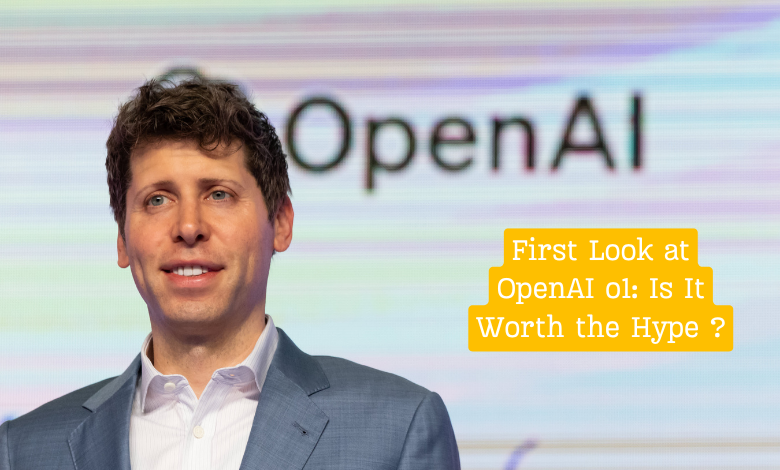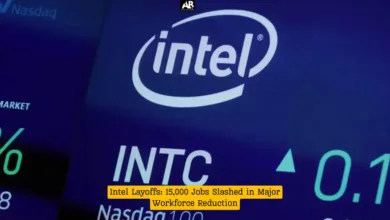First Look at OpenAI o1: Is It Worth the Hype?
OpenAI has once again made waves with the release of its o1 model, dubbed "Strawberry" within the company. As AI continues to evolve, o1 stands out for its focus on deep reasoning and its ability to "think" before responding. But with all the buzz surrounding this new release, does it truly live up to expectations? In this article, we’ll explore the model’s strengths, its drawbacks, and whether it’s a worthy successor to OpenAI’s previous versions, like GPT-4o.

What Is OpenAI o1 ?
OpenAI o1 is a next-generation AI model developed by OpenAI with a specific focus on complex, multi-step reasoning. Unlike previous models that quickly generate answers, o1 pauses to break down complex problems into smaller parts before delivering a response. This deliberate approach has made o1 a unique and exciting tool for answering difficult questions that require more than just a quick response.
The Good: OpenAI o1 Excels at Complex Reasoning
The biggest advantage of OpenAI o1 is its ability to tackle intricate problems that require thoughtful reasoning. It’s particularly useful for tasks like planning events, solving difficult puzzles, or helping users think through large-scale challenges. For example, when asked to help organize a complex Thanksgiving dinner, OpenAI o1 breaks down the steps in a logical and easy-to-understand manner. Its capability to “walk backward” from big problems is its most innovative feature, allowing users to understand the reasoning process at each step.
The Drawbacks: OpenAI o1 Is Expensive and Slow
While o1 shines in complex tasks, it’s not without its flaws. The model is slower compared to OpenAI’s previous releases, like GPT-4o, and is significantly more expensive to use. The additional “thinking” process in o1 comes with a cost: users pay for “reasoning tokens,” adding to the overall expense. OpenAI’s own documentation recommends using GPT-4o for simpler tasks, as o1 may be overkill for basic questions.
For instance, asking o1 a simple query like “Where can I find cedar trees in the U.S.?” results in an unnecessarily detailed 800-word response, when GPT-4o could provide a concise and direct answer. This tendency to overthink trivial questions can be frustrating for users not seeking extensive explanations.
Is OpenAI o1 a Game Changer ?
In terms of its reasoning capabilities, OpenAI o1 represents a step forward, but it’s not quite the revolutionary leap that some had hoped for. It’s not a tool for everyday tasks or casual use—its strength lies in addressing large, complicated questions that demand rigorous thought. As a result, o1 is a niche tool aimed at solving problems where traditional AI models fall short.
As AI expert Kian Katanforoosh points out, “If you can train a reinforcement learning algorithm with step-by-step reasoning, you open up the possibility of deeper insights.” This is where o1 shines, although the high price tag may limit its appeal to users who only occasionally need such in-depth analysis.
The Future of AI with OpenAI o1
While o1 may not be the AGI (Artificial General Intelligence) some speculated it would be, it sets the stage for more nuanced AI development. OpenAI’s CEO Sam Altman has tempered expectations by reminding users that “o1 is still flawed, still limited.” Nevertheless, it’s a significant advancement in AI reasoning, and with future updates, OpenAI could refine this model to address some of its current limitations.
The Price of Advanced Reasoning
OpenAI o1 is also noteworthy for being one of the first AI models to reverse the trend of decreasing costs in AI technology. Its complexity comes with a hefty price tag, which raises the question: Is this added functionality worth the cost? For large businesses or specific industries that rely on solving complex problems, the answer may be yes. However, for the average user, GPT-4o remains a more cost-effective option.
Final Thoughts: Is OpenAI o1 Right for You ?
OpenAI o1 represents a fascinating development in AI technology. Its ability to “think” before responding gives it an edge in tackling complex, multi-step tasks. However, the higher cost and slower response times mean that it may not be the best choice for everyday users or simple queries.
For users dealing with intricate issues that require detailed problem-solving, OpenAI o1 is a powerful tool that can offer significant insights. But for most, GPT-4o will continue to be the go-to model for quick, efficient answers. Ultimately, whether o1 is the right fit for you depends on the complexity of your needs—and your budget.
Top 5 FAQs About OpenAI o1
1. What makes OpenAI o1 different from GPT-4o? OpenAI o1 focuses on deep reasoning and breaks down complex problems into smaller steps before delivering an answer, whereas GPT-4o is faster and better suited for simpler tasks.
2. Is OpenAI o1 more expensive to use? Yes, o1 is significantly more expensive due to its “reasoning tokens,” which are added costs for the AI’s multi-step reasoning process.
3. When should I use OpenAI o1 instead of GPT-4o? OpenAI o1 is ideal for complex questions that require in-depth reasoning, while GPT-4o is better for straightforward queries.
4. Does OpenAI o1 overthink simple questions? Yes, o1 tends to provide overly detailed responses for simple queries, making GPT-4o a more efficient choice for basic tasks.
5. Is OpenAI o1 faster than previous models? No, OpenAI o1 is slower compared to GPT-4o due to its added “thinking” process, which involves breaking down complex problems.





